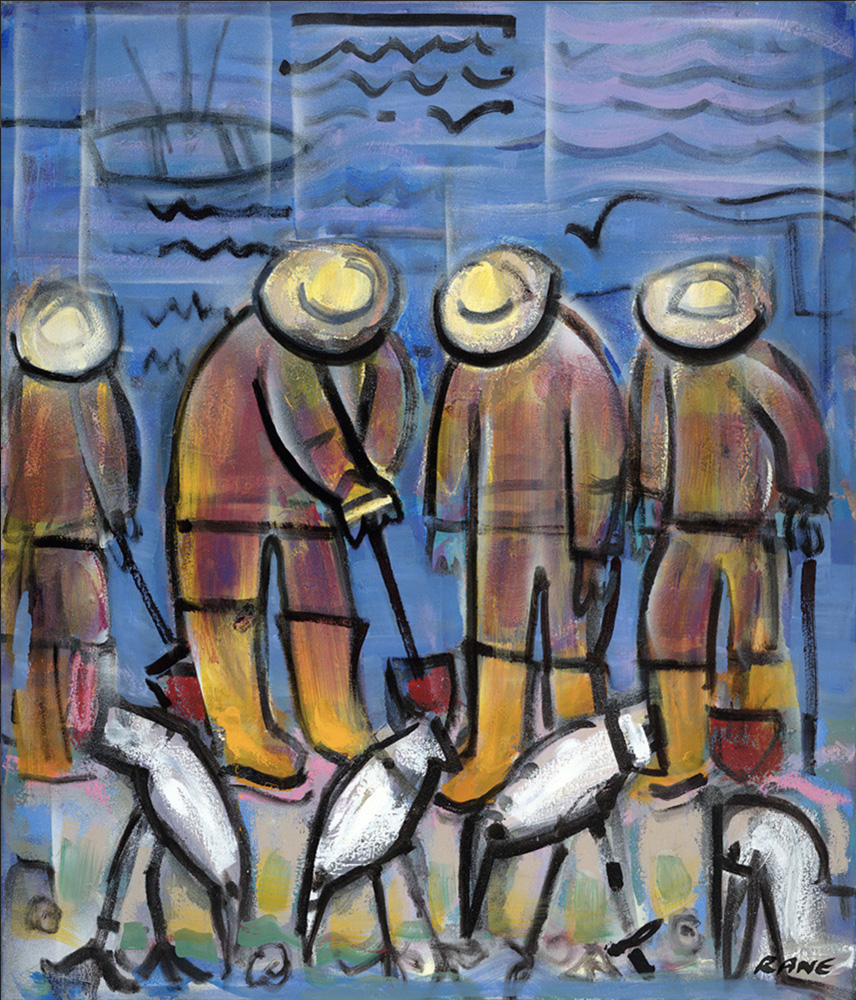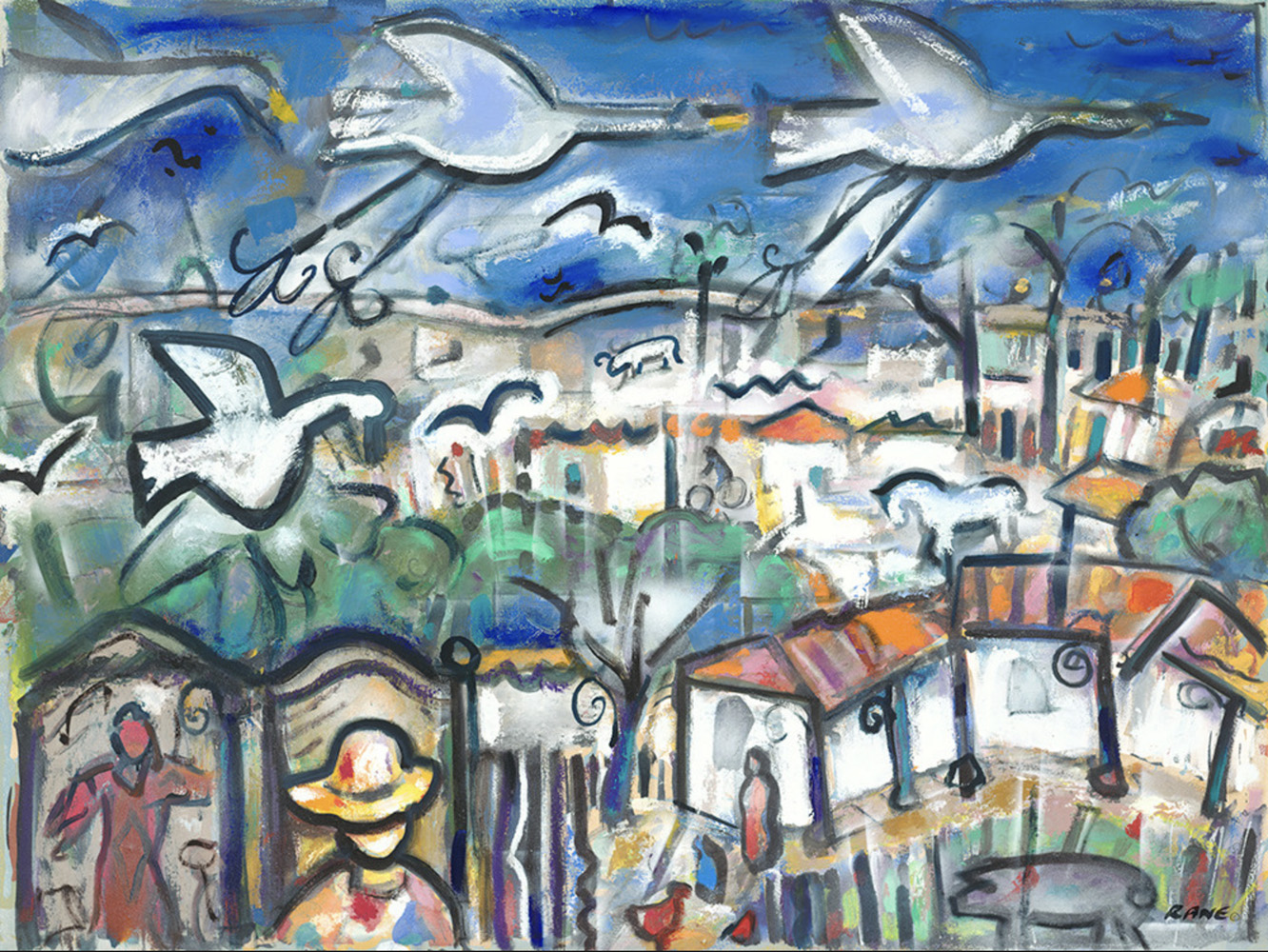
BILL RANE
BILL RANE [1927 – 2005]
Bill Rane was born in Bend, Oregon on March 3rd, 1927, but grew up a few hundred miles east in the remote and idyllic hills of Garden Valley, Idaho. As a boy, he gleamed he might become an artist but it was not until after serving in the U.S. Navy during WWII that he began his studies in earnest.
He first attended Boise Junior College, then San Francisco State College, and finally the University of California at Berkeley, studying art and literature at all three. Trips to Latin America became frequent and made a lasting impression upon his artistic soul. From the late 1940’s through the early 1950’s, he was living, off and on, in Guatemala where he married a native Guatemalan and had three children. However, by the late 1950’s, now divorced, he became part of the beatnik community in San Francisco and Sausalito. Painter, roustabout, and raconteur, he was a fixture in the early Sausalito Arts Festivals. In 1958 Bill remarried (for forty-seven years) and had, over time, five more children. The family traveled extensively throughout Mexico because Bill continued to be captivated by the mythology and culture of Latin America with its exotic ancient treasures as well as its vibrant village markets alive with flowers, textures, and colors.

Stylistically, he also drew inspiration from other ancient cultures...
Stylistically, he also drew inspiration from other ancient cultures as well as the early modernists. Visitors to his studio could often be caught cocking an ear as they heard him refer to “the literature of paint” when describing his work. The phrase was an apt one for it revealed Bill as an avid reader with a boundless curiosity for the literature, arts, and myths of all cultures. He could just as easily delve into the Greek Classics or ancient Egyptian and Mayan mythology as to create a visual metaphor. At the same time, he admired such masters as Modigliani and Picasso while remaining resolute in forging his own unique style. As an important part of that process, he often demanded of himself the reworking of paintings over and over, typically painting with a heavy impasto as he layered oil pigments – sometimes to the point of building mounds of paint upon his canvases. He was constantly moving in the studio, weaving about his easel, dripping, dropping, and dashing brush strokes. The process might appear both random and obsessive to the observer yet these strokes were assuredly from the steady hand of a master. In short, his body and soul were immersed in every piece. Thus, elements, both ancient and modern, provided inspiration for a large body of paintings that form his cosmic codex.
The stylized female figure is likely a sylph. The pictograph may refer to an ancient myth. Other recurring subjects included goddesses, mythical animals, sea creatures, geese, pelicans, and pomegranates.

Bill was also a writer...
Bill was also a writer, tracing his spiritual development in a poetic bildungsroman novel entitled, Talfulano (New York: Horizon Press, 1976). He had also begun work on a second novel, The Diary of a Tomb Painter, the essence of which would reveal the artist’s exigency to tangle with mankind’s most inner complexities.
In describing the book, he mused on which images the pharaoh would select for the chamber walls to aid his passage into the afterlife.
In his planning the pharaoh decreed to his tomb painter:
“Paint, no battles, no accomplishments. Paint the feeling of the great river winding through the land and lovers lying on her shores. Paint children at play in the bulrushes. Paint the graceful Ibis wading. Paint fishermen in their boats catching fish and the great muscled flanks of my horse, his exquisite head with his nostrils flaring. Paint the beauty of the Queen’s sad eyes, the curve of her neck and bodice. Paint the great ocean with her sea birds. Paint the feminine … paint women washing clothes at the river’s edge, women in the market place, mother with child. Paint musicians playing and villagers dancing. Paint the great mating rituals of men and of beasts. Let your brushes and your paint celebrate the beauty of life, tomb painter! It is remembrance of the light that ferries the soul to the far shore.”
On the morning of September 2nd, 2005, when the sun was just rising over Taos Mountain, Bill passed away. One close friend remarked, “It is like a great old library has burned down. The world has lost so much”. His granddaughter, Sophie, said: “I thought Grandpa was like the mountains – and that he would be here forever. Ultimately, Bill was a seeker of universal values and cosmic truths. He believed in the concept of the “Everyman/Woman”. In every work, we see the footprints of various timeless cultures. We see humanity’s reach for beauty. Moreover, we see and feel the heartbeat of Bill Rane, a great American painter.
